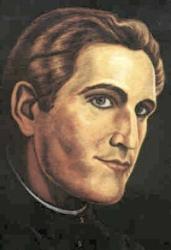Scripture References:
all st. = Luke 2:1-20
With a mixture of reflection and awe, the writer evokes the night of Christ's birth, recalling not only the birth but also its meaning: the Christ who is born in Bethlehem is our Savior and our King!
Parish priest Joseph Mohr (b. Salzburg, Austria, 1792; d. Wagrein, Austria, 1848) wrote the original German text in six stanzas in Oberndorf, Austria, on December 24, 1818, for St. Nicholas's Church. Because the church organ had broken down that day, Mohr and his parish organist, Franz Gruber (b. Unterweizberg, near Hochburg, Austria, 1787; d. Hallein, near Salzburg, Austria, 1863), composed this beloved hymn to be accompanied on guitar for the Christmas Eve service.
After organ repairman Karl Mauracher heard the hymn, he took the manuscript to the Tyrol region. Because it was sung by various Tyrol folk groups (including the touring Strasser "sisters" and the Rainer family), "Silent Night" became known as a “Tyrolean carol.” The hymn's widespread use enhanced its popularity throughout Europe and North America during the middle nineteenth century. Without attributing the hymn's composition to Mohr and Gruber, the Leipzig Katholisches Gesang-und Gebetbuch first published the hymn in 1838; because of the efforts of Gruber's grandson, the author and composer were soon recognized.
Author Joseph Mohr was born into a humble family–his mother was a seamstress and his father, an army musketeer. A choirboy in Salzburg Cathedral as a youth, Mohr studied at Salzburg University and was ordained in the Roman Catholic Church in 1815. Mohr was a priest in various churches near Salzburg, including St. Nicholas Church. He spent his later years in Hintersee and Wagrein.
Various English translations abound, some of which are rather free paraphrases. The familiar stanzas 1, 3, and 4 in the Psalter Hymnal come from the popular English translation by John F. Young, first published in John C. Hollister's Sunday School Service and Tune Book (1863). Henrietta Ten Harmsel (PHH 61) wrote stanza 2 and made other alterations in the text in 1984 to "stress the paradoxes and deeper meanings of Christmas."
Liturgical Use:
Candlelight worship services on Christmas Eve; church school programs; "carols from many lands" choral services.
--Psalter Hymnal Handbook
Hymnary Pro Subscribers
Access
an additional article
on the Canterbury Dictionary of Hymnology:
Hymnary Pro subscribers have full access to the Canterbury Dictionary of Hymnology.
Get Hymnary Pro


 My Starred Hymns
My Starred Hymns








